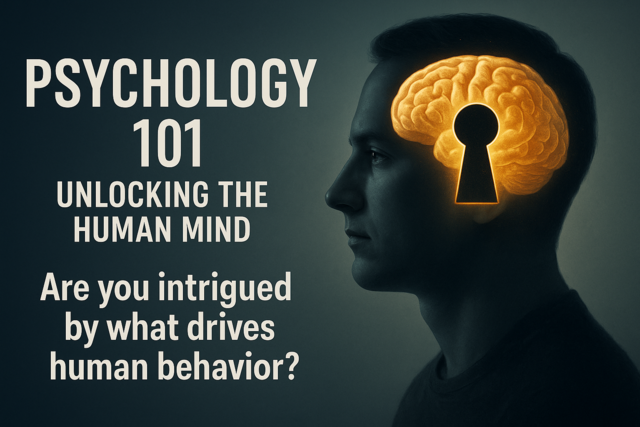"Stress" and "depression" aren't words we use frequently with children or when talking about them. However, these conditions deeply affect children through early and middle childhood, as well as adolescence. Stress and depression can factor into a child's development both when directly experienced by them, as well as when experienced by family members or other people close to them.
Sources of Stress and Depression
divorce and separation - This is one of the most common causes of stress and depression in children from early through late childhood. When the family unit changes shape and structure significantly, children will have a period of adjustment that can include stress and depression. In more intense scenarios, children may be witnessing or at least be aware of conflict between parents for weeks and months before conflict resolution is reached through formal separation and restructuring of the marriage or partnership to a co-parenting relationship. Older children may experience isolation since they may not yet have developed an external network of peers and other trusted adults with whom they can openly discuss any instances of trauma relative to the divorce or separation.
moving - Whether moving across the country or simply to another house in the same neighborhood or city, relocating can cause significant stress in children. Depression may come much later when it feels to the parents as though everyone is settled into the new environment and routine, but the child is still experiencing concentric effects of a complete change in their family life. This is especially possible when the child has not experienced a move previously. Suddenly, the entire world as they have known it since before they can remember looks different at every turn.
school, other community environments, and social relationships -Especially as children get older, possible sources of stress and triggers for depression can multiply and even augment each other. For example, a school age child may be able to manage having difficulty understanding a new math concept in the classroom with typical supports available. But if they are also experiencing bullying on the playground during the same time frame, they may have increased stress and/or depressive reactions.
Recognizing Stress and Depression
Parents and caregivers may be surprised to learn that stress and depression symptoms can exhibit themselves in myriad ways from an extremely young age even among children in the same family unit. In infants and toddlers, symptoms of stress can include crying, a desire to be held more than "normal," difficulty sleeping, and even excess sleeping. Particularly in toddlers, symptoms may include asking for something specific and then refusing it, then asking for it again right away. It's important to remember that and infant's crying is normal and is a baby's way to self-regulate with comfort support from an adult, as well as communicate basic needs for nutrition, diapering, rest, and attention. For toddlers, experimenting with different ways to express emotion, including stress-related feelings, is normal. The toddler should be encouraged to experiment with different communication strategies as they naturally occur, while being coached by adults to shape those natural inclinations to tantrum, testing boundaries, and use of their bodies to show emotion into effective foundational strategies for getting their needs met and engaging in social relationship building.
As children get older, stress and depression can begin to manifest in both externalized and internalized symptoms. School age children may not be as likely to yell or cry when experiencing stress or depression. They may withdraw and exhibit shyness, reservation, or disinterest in activities that have typically been a favorite for them. In middle childhood and adolescence, children may also "cover" by deflecting attention of adults to neutral topics that aren't presenting stress in their lives. They may lie about events that occurred during a stressful event or behaviors associated with stress that they feel may result in punishment or other limitations being imposed on their independence. Sleeping or sleeplessness may increase. Children may retreat to their room at home and stay there for much longer than normal. While alone time and an increased need for independence are normal, necessary and healthy parts of a child's overall development, a sharp increase can indicate stress or depression. It's important for adults and caregivers to watch and evaluate changes in children's behavior both in obvious occurrences of external behavior and symptoms, as well as indicators of possible internalized stress and depression.
In order to support children to effectively cope with stress and depression both in their close family members, as well as in themselves, consider the following strategies.
1. Manage expectations. Often, sources of stress within the home environment can be predicted ahead of time. By acknowledging limitations and adjusting expectations accordingly, impacts of stress on the family can be minimized. For example, the addition of an infant to the home and family dynamic may mean that there will not be as much time or energy to devote to meal preparation, chores, and duties for older children like volunteering at their school or arranging the soccer practice carpool rotation. By openly recognizing and discussing these standing limitations that will exist perpetually at least for a time, the family can decrease expectations in those other areas by simply saying, "I'm not going to be able to do _________, and that's okay." This will decrease the stress reactions in the moment during daily activities and in turn, decrease the effects of stress on the child. This also applies in situations that can't be planned for as far in advance. For example, if the parent is awake several times in the middle of the night to feed an infant experiencing a growth spurt or to tend to a sick child, they may need to adjust expectations for the following day by taking a sick day from work or ordering-in dinner instead of cooking a meal from scratch.
2. Ask for help. Today's nuclear families can be much smaller with less adult support available in the home unit than in the past when it was more common for three or even four generations to reside in the same house. This means that families sometimes need to be creative and think outside the box in how they will obtain help with stress management for themselves and for their children. This becomes particularly critical when someone in the family is experiencing depression. Asking for help in this situation can range from calling on a friend to help take care of the children so that a new mother experiencing postpartum depression can go to a doctor's appointment to hiring short or long-term professional support for the home environment like a postpartum doula.
3. Establish routines and comfort objects. Parents and caregivers can support children to minimize impacts of stressful events before they occur by ensuring the child has a strong basis of routines in their daily life as well as tangible comfort objects. For example, in the case of a move and relocation to a new house or other living situation, children will benefit from maintaining a bedtime routine with familiar steps like brushing teeth and reading together. Having a tangible comfort object available across environments will also help. For example, an infant or toddler may have a pacifier or familiar blanket available to them not only with their parents but also when they are with a nanny, daycare provider, or other caregiver. A young child may benefit from always having access to a comfort object like a small album of family photos or a stuffed animal. An older child can also benefit from a "comfort object" in a more mature form like favorite songs on a portable music player or a journal and colored pencils. It's important to remember that comfort objects can take a wide variety of forms and the actual item itself will always depend on what works best for the individual child.
4. Communicate often. Even from infancy, the communication environment around the child is building the foundation for how they will express their needs, as well as listen to the needs of others in the future. Families and caregivers can model effective communication strategies by demonstrating them during conversations, even those that involve conflict discussion and resolution, as well as delivering narrative interpretation of the young child's early communication strategies. For example, when a baby is crying, the caregiver might say something along the lines of, "You are letting me know that you are hungry, thank you for telling me you need some attention right now," etc. With older children, it's important to continue the process of encouraging and validating communication around stress and depression as their vocabularies increase and their ability to express a complexity of emotions increases. Adults and caregivers can remove stigma from terms like "depression" by using them in normal conversation and talking about stress when it isn't happening directly within the family unit. This will support children to be able to more fluently communicate their needs to adults when stressful situations do occur. Adults and caregivers should provide recognition for visible symptoms of stress and depression, as well as invisible ones. When the child talks about something they are feeling or experiencing or a source of stress that happened in a separate environment, the adult or caregiver should trust that the child is expressing something important or expressing a need even if they are not being entirely truthful. Bring in other resources like school counselors and outside therapists as needed.
Stress is a natural part of life and rather than try to eliminate it completely from children's lives, parents and caregivers can support children to develop coping skills and emotional resiliency to effectively deal with stress when it happens. In cases of more serious clinical depression, parents and caregivers can work together with trained medical providers like psychiatrists and mental health therapists to build on these same coping skills and ensure the child can actively and fully engage with their social environments. By first recognizing stress and depression and then teaching skills for mitigation and management, adults and caregivers can provide children with a secure foundation of strategies from infancy through adolescence.

























